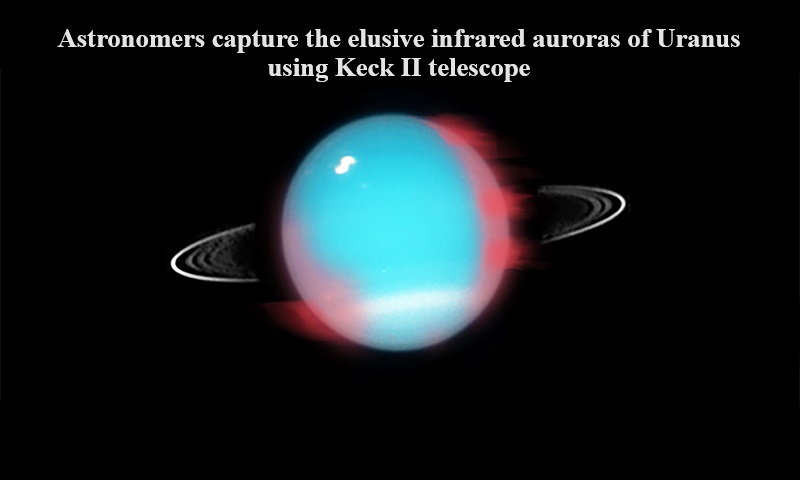
Astronomers have achieved a significant milestone in their exploration of the solar system by capturing the elusive infrared auroras of Uranus using archived data from the colossal Keck II telescope located on the summit of Mauna Kea in Hawaii. These findings were published in the Nature Astronomy journal.
This finding signifies a significant leap forward in humanity’s comprehension of the ice giant planet Uranus. For the first time, infrared auroras have been identified on Uranus, providing insights into the intriguing celestial processes taking place on this distant ice giant, situated 2.79 billion years away from Earth.
Much like auroras on Earth, the auroras on Uranus are generated when charged particles from the solar wind interact with the planet’s magnetic field and are subsequently directed along magnetic field lines toward the planet’s magnetic poles. Upon entering Uranus’s atmosphere, these charged particles engage in collisions with atmospheric molecules, causing these molecules to emit light.
On our planet, the captivating auroral displays result from interactions with oxygen and nitrogen atoms, resulting in colors primarily in shades of red, green, and blue. However, Uranus distinguishes itself due to its unique atmospheric composition, primarily consisting of hydrogen and helium and existing at substantially lower temperatures than Earth. Consequently, Uranus exhibits an auroral glow primarily in ultraviolet and infrared wavelengths.
The ultraviolet auroras on Uranus were initially observed by NASA’s Voyager 2 probe in 1986 during its flyby of the planet. However, nearly four decades were needed to identify and detect their infrared counterparts.
In this recent discovery, astronomers harnessed data from the Keck II Near-Infrared Spectrometer (NIRSPEC) dating back to 2006. The study unveiled that the emission lines on Uranus originate from the H3+ molecule, a trihydrogen cation with three protons and only two electrons, rendering it positively charged.
The infrared aurora on Uranus resulted from molecular hydrogen becoming ionized, leading to the formation of H3+ cations following collisions with charged particles. This process gave rise to a captivating infrared auroral glow, visually reminiscent of the northern lights on Earth.

Post Your Comments